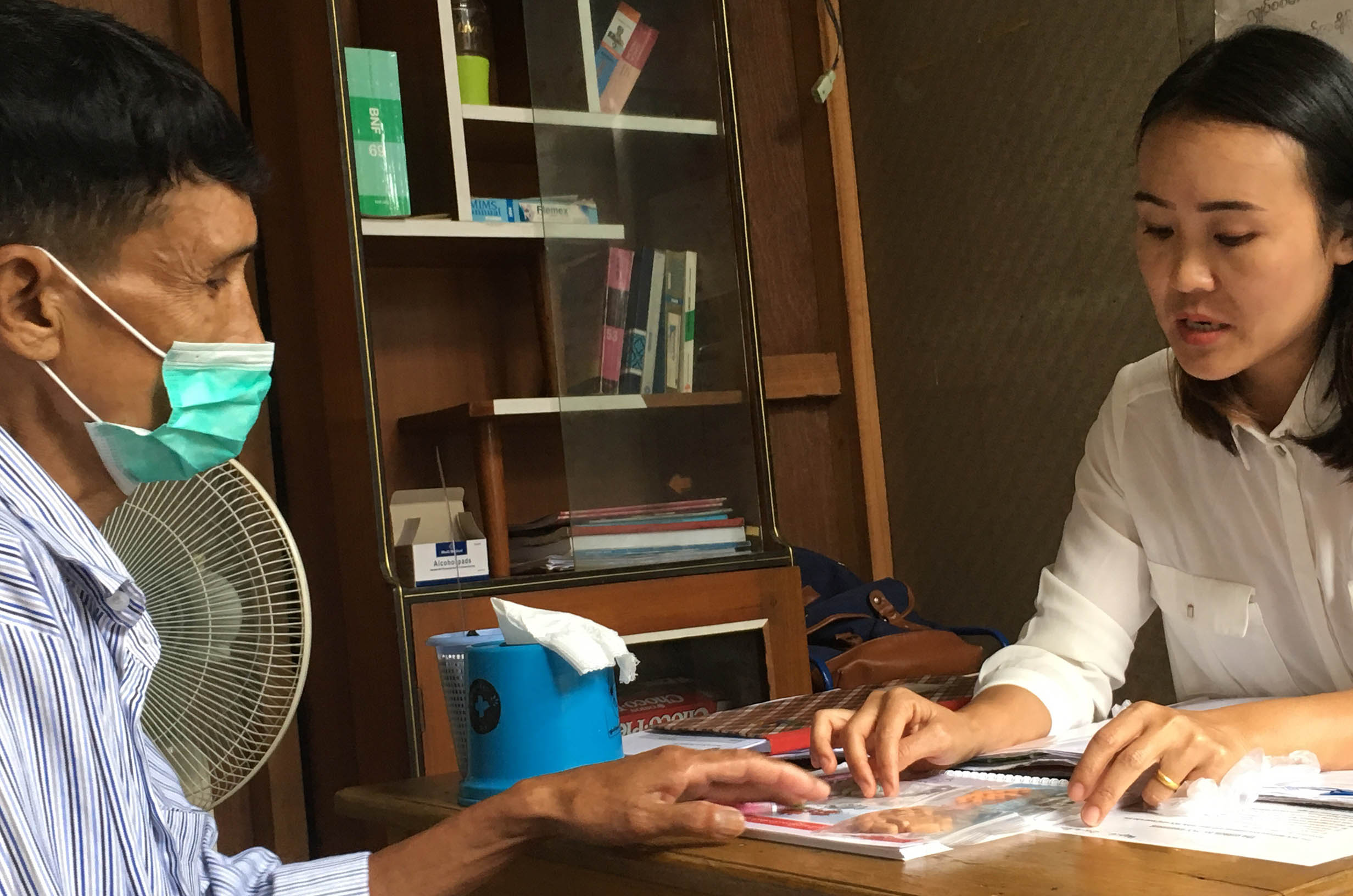28 July
On World Hepatitis Day, Médecins du Monde (MdM) and its partner organizations, Drug Policy Advocacy Group, Metta Development Foundation, National Drug User Network-Myanmar and Alliance –Myanmar urge expansion of hepatitis C prevention and treatment services for people who inject drugs (PWID) and other people at high risk of infection.
According to the Ministry of Health and Sports (MoHS), an estimated 95,000 people in Myanmar inject drugs. More than half of them (56%) are living with hepatitis C virus (HCV), a deadly blood-borne infection. Despite the efforts of MoHS and partners, access to live-saving treatment remains extremely limited in Myanmar, particularly for PWID.
The new direct-acting antiretroviral (DAA) treatments can cure hepatitis C within 3 months, have less side effects and have become more affordable, but many barriers to prevention and treatment services for PWID remain. These include limited health literacy, low coverage of PWID-friendly health care services in remote areas and costs for required lab tests. Although the cost of treatment has decreased to around 1,500,000 MMK, this is not affordable for most of the people who used drugs.
Stigma towards drug use is also a big challenge. PWID are often arrested and harassed, driving them into self- stigmatization. They may exclude themselves from their families and society, limiting even more their access to health care and treatment. PWID take the worst of Myanmar’s Hepatitis C infections, yet they have very limited opportunities to access treatment.
Comprehensive harm reduction services are also essential in line with hepatitis C care and treatment in order to prevent re-infection. There are risk factors like sharing needles or injecting equipment in the daily drug use which can cause a new infection even if people got cured. Thus, self-support groups can be the necessary bridge between PWID and medical professional to get relevant information with regard to hepatitis.
In collaboration with Médecins Sans Frontières Switzerland (MSF –CH), MdM has started offering hepatitis C prevention and treatment in Kachin in 2019. Through this programme, MdM and MSF-CH could help improving access to treatment for Myanmar’s most vulnerable populations. Total number of 791 patients were enrolled from July 2019 until now in the programme: 530 started treatment, 373 completed the treatment period and 113 were cured. Community engagement in the programme is a strong support to improve the dissemination of preventive education including treatment adherence. This effort is made possible thanks to generous support from INGO private funds and the Global Fund to Fight AIDS, Tuberculosis and Malaria, under the leadership of the Ministry of Health and Sports.
Ko Kyaw Kyaw (not real name), injecting drug user who is taking hepatitis C treatment from MdM shared: “It has been 10 years since I have known I was positive for hepatitis C. Even though I wanted to get the treatment in the first place, there were no clinic or hospital providing the treatment free of charge at that time. Besides, I would have been stigmatized by the local community for several times. Even my own family members didn’t treat me well due to the fear of disease. As my health also deteriorated in 2019, I came to know that MdM was offering treatment for hepatitis C, which I think I was lucky and very blessed. The doctors (of MdM) put me in 6-months treatment plan. I took the blood testing again after 3 months when the treatment was completed. I was so excited to know the result: “What should I do if it’s not cured?’’ When the doctors said it’s been totally cured, I was so glad.
After the treatment, my health becomes better and I faced less discrimination within the community as people get to know more about this disease. Now I can work really well without worrying about my health. And I am accessing harm reduction services from MdM to prevent reinfection.
Sun Ra Li (hepatitis C counsellor) who is working in Mogaung’s Key Population Service Centre (KPSC): ‘’Motivate yourself and take the pills regularly as per our advices. Hepatitis C is a curable disease and you can be cured completely.’’
‘’There are so many HCV infected patients among drug user community. They know that hepatitis C is a life- threatening disease. They were asking if MdM has any plan to treat hepatitis C monoinfected individuals. We still have limitations in the provision of hepatitis C treatment. Now we are only treating HIV/HCV coinfected individuals. Patients who only have hepatitis C also want the treatment’’ stated by Dr. Zaw Zaw Aung (HCV Program Manager)
Myanmar has made important progress expanding access to hepatitis C prevention and treatment services. However, if we want to meet the global health strategy goals to reduce new infections by 90%, and to cure 80% of people living with hepatitis C by 2030, we must improve availability and accessibility of hepatitis C prevention and treatment services, especially for PWID. We urge donors, local stakeholders, civil society, and the Ministry of Health and Sports to redouble efforts to provide hepatitis C treatment and care services for all vulnerable people in Myanmar.
By Nu Nu Lwin (MdM)



